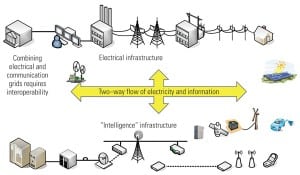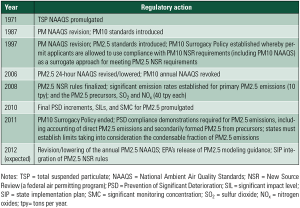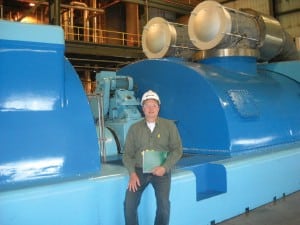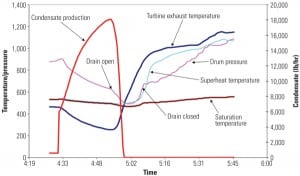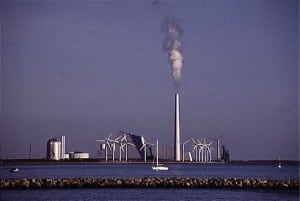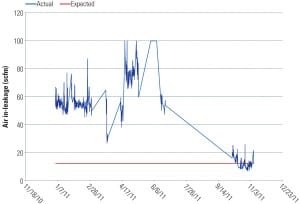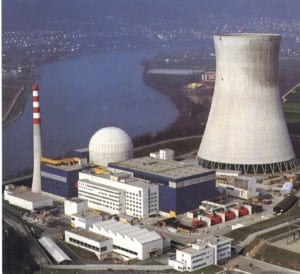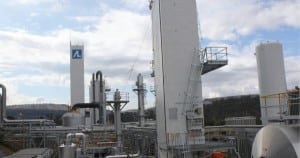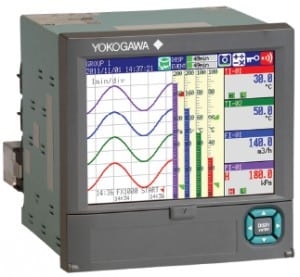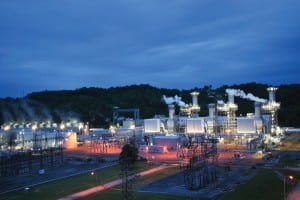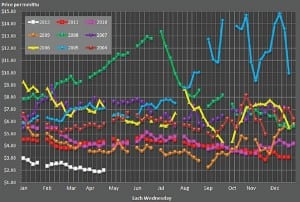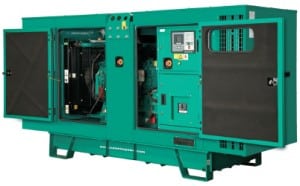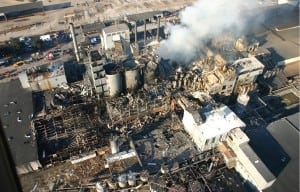In This Issue
-
Instrumentation & Controls
Guidance on Cybersecurity for the Electricity Sector
The cybersecurity needs of the electric power industry are unique, due to the critical nature of the product and the wide range of technologies that must be considered—from complex, modern industrial control systems to aging infrastructure elements.
-
Environmental
Particulate Matter Air Quality Standards Continue to Evolve
The U.S. Environmental Protection Agency has regulated particulate matter as an air pollutant for more than 40 years. Over time, PM regulations and testing methodologies have become more complex, with the focus shifting to smaller particle size fractions and the inclusion of the condensable form of PM. New developments make navigating the permitting and compliance process efficiently more important than ever.
-
Solar
Boosting CSP Production with Thermal Energy Storage
Combining concentrating solar power (CSP) with thermal energy storage shows promise for increasing grid flexibility by providing firm system capacity with a high ramp rate and acceptable part-load operation. When backed by energy storage capability, CSP can supplement photovoltaics by adding generation from solar resources during periods of low solar insolation.
-
Gas
Unconventional Gas: The Great Game-Changer
Dr. Daniel Yergin, chairman of IHS Cambridge Energy Research Associates, is a Pulitzer Prize–winning author; leading authority on energy, international politics, and economics; and a recipient of the United States Energy Award for “lifelong achievements in energy and the promotion of international understanding.” He recently spoke with POWER about his latest book—and more.
-
News
Self-Improvement Strategy
POWER marks its 130th year of service to the power generation industry with this issue. Instead of cake for the staff, we decided to celebrate the milestone in a way that will benefit our readers and supporters for many years to come.
-
History
Japan Scrambles to Revamp Its Electricity Sector
The March 2011 Japanese earthquake and tsunami that destroyed a number of Japanese power plants—most notably, four nuclear units—hit quickly. Almost as speedy were calls to take all other nuclear units out of service for safety reviews. What will take much longer is developing a new, sustainable energy plan to fill the generation gap left by a potential total lack of nuclear power.
-
Gas
THE BIG PICTURE: A Shale Gas Revolution
Large circles represent technical reserves and small (blue) circles represent potential reserves of shale gas, both in trillion cubic feet. Bars on the right represent each region’s existing natural gas–fired generation in 2008 (yellow) and the amount projected for 2035 (blue) in TWh. OECD = Organisation for Economic Co-operation and Development. Data source: Energy Information […]
-
Business
Going the Distance: Online Courses for Power Industry Professionals
Online learning is opening up new opportunities for those unable to attend classes on campuses. Bismarck State College and the University of North Dakota, for example, offer innovative online courses and degree programs to students who want successful careers in the electric power industry.
-
Gas
Europe Dallies with Shale Gas Exploration
Massive offshore shale gas reserves exceeding 1,000 trillion cubic feet (tcf) discovered in the UK in April could catapult that country to the top ranks of global producers.
-
O&M
Startup Purge Credit Benefits Combined Cycle Operations
Combined cycle power plants use fuels and other materials that can cause fires or explosions in the combustion turbine, ducting, or heat recovery steam generator. Purging that equipment with ambient air to displace residual combustible gases before starting is a normal safety practice. But when plants are cycled, the disadvantages of purging often outweigh the advantages.
-
Coal
Denmark Extends Renewables Standard to 100% by 2050
Denmark’s parliament in late March agreed to a new energy strategy seeking to wean the country off oil and gas. It could result in the Nordic country cutting its greenhouse gas emissions 34% by 2020, compared to 1990 levels, and decreasing energy consumption by more than 12%, compared to 2006.
-
O&M
Improve Condenser Performance Through Better Instrumentation
Most power plants use some form of condenser performance-monitoring protocol. Some of those protocols are deficient because the proper instrumentation is not installed to collect the necessary data. Three case studies illustrate how collecting good condenser performance data enabled plant staff to troubleshoot problems and make good plant performance improvement decisions.
-
Gas
Switzerland Contemplates Filling Future Nuclear Energy Gap
A model of Switzerland’s energy future to 2050 that abides with the country’s post-Fukushima decision not to build any new nuclear power plants suggests the phase-out could cost nearly $33 billion.
-
Nuclear
Too Dumb to Meter, Part 2
As the book title Too Dumb to Meter: Follies, Fiascoes, Dead Ends, and Duds on the U.S. Road to Atomic Energy implies, nuclear power has traveled a rough road. In this POWER exclusive, we present the second chapter, “Manhattan Transfer,” which covers the open fight for control of the development of nuclear power between the newly created Atomic Energy Commission and the military services, with the politicians playing both sides against each other.
-
Coal
Callide Oxyfuel Carbon Capture Plant Retrofit Moves Forward
Oxyfuel technology has been retrofitted at a 700-MW coal-fired power plant in Queensland, Australia, and is now capturing carbon dioxide from one of the plant’s six steam boilers.
-
News
New Paperless Recorder
Yokogawa’s new FX1000 paperless recording system provides premium features and performance for cost-sensitive OEM suppliers and end user process recording applications. Delivering a high level of measurement, recording, and networking functionality in a compact package, the shallow 6.5-inch case depth behind the panel allows for installation in tight locations and easy system integration. A high-precision, […]
-
Gas
TVA Begins Operation of John Sevier CCGT Plant
The Tennessee Valley Authority (TVA) has begun commercial operation of the natural gas–fired 880-MW John Sevier Combined Cycle Plant, located near Rogersville, Tenn.
-
News
Smart Welding Helmet
South Carolina–based ESAB Welding & Cutting Products introduced the Aristo Tech 5-13 Welding Helmet with Variable Shade ADF. Designed for the professional welder, the helmet features Auto-Darkening Filter Lens Technology (ADF) and has a variable 5-13 digital control for adjustment of shade level, sensitivity, and delay. The helmet’s Quick Set feature allows for easy change […]
-
Business
POWER Digest (June 2012)
ABB to Refurbish Generators at Two Swiss Hydro Plants. ABB on April 20 said it had received $20 million of orders from two power utilities managed by Axpo, a leading Swiss power utility, to refurbish the generators at two of its hydroelectric power plants. The plants are located in the mountainous canton of Wallis (Valais) […]
-
News
Dust Suppression for Slag or Ash Handling
The new DustBoss from Dust Control Technology DB-M is designed for applications in which a fan-driven mist could generate undesirable turbulence and is well-suited to operating conditions involving very fine dust particles, including slag dust or fly ash. The unit generates an umbrella-shaped cloud of atomized droplets averaging 50 to 200 microns in size and […]
-
Gas
The Quest at CERAWeek 2012
In March, Cambridge Energy Research Associates hosted its 30th annual CERAWeek, a conference that is renowned for high-profile attendees from around the world.
-
News
New Diesel Generator Sets
Cummins Power Generation announced two new internationally styled and designed diesel generator set ranges for global markets. Powered by Cummins engines, both are maintenance-friendly. CE-certification and compliance with international standards make them ideal for a wide variety of applications, including in remote locations. The new low-range 40- to 75-kVA generator sets feature the Cummins S3.8 […]
-
O&M
Combustible Dust Management Training: Rely on Best Practices, Not Shifting Regulatory Winds
None of you reading this magazine needs an article—or new governmental regulations—to tell you that flash fires and explosions involving coal dust can cause catastrophic incidents, fatalities, facility damage, and financial consequences.
-
Commentary
Climate and Energy Policies: Two Sides of the Same Coin?
In a 2006 statement, former UK Prime Minister Tony Blair said, “We must treat energy security and climate security as two sides of the same coin.” Are energy security and climate change best addressed by reducing fossil fuel combustion, as he suggested?
-
Legal & Regulatory
Can California’s Cap-and-Trade Program Turn Manure into Gold?
California’s Cap-and-Trade Program is the only cross-industry, market-based climate change regulatory program in the United States. This program may provide a good investment opportunity for dairy farmers, livestock owners, and others if the program’s Livestock Project protocol for offsets can get off the ground and maintain a viable price for greenhouse gas (GHG) allowances.
-
Nuclear
Japan’s Nuclear Infrastructure
This overview of Japan’s nuclear fleet is a web supplement to the June 2012 feature “Japan Scrambles to Revamp Its Electricity Sector.” For a list of major Japanese generating companies, see Figure 1 in that article.
-
Instrumentation & Controls
Ensuring the Cybersecurity of Plant Industrial Control Systems
Industrial control systems (ICSs) manage global industrial infrastructures, including electric power systems, by measuring, controlling, and providing a view of control processes that once were visible to the operator but now are not. Frequently, ICSs are not viewed as computers that must operate in a secure environment, nor are they often considered susceptible to cybersecurity threats. However, recent cybersecurity failures have proven these assumptions wrong.


